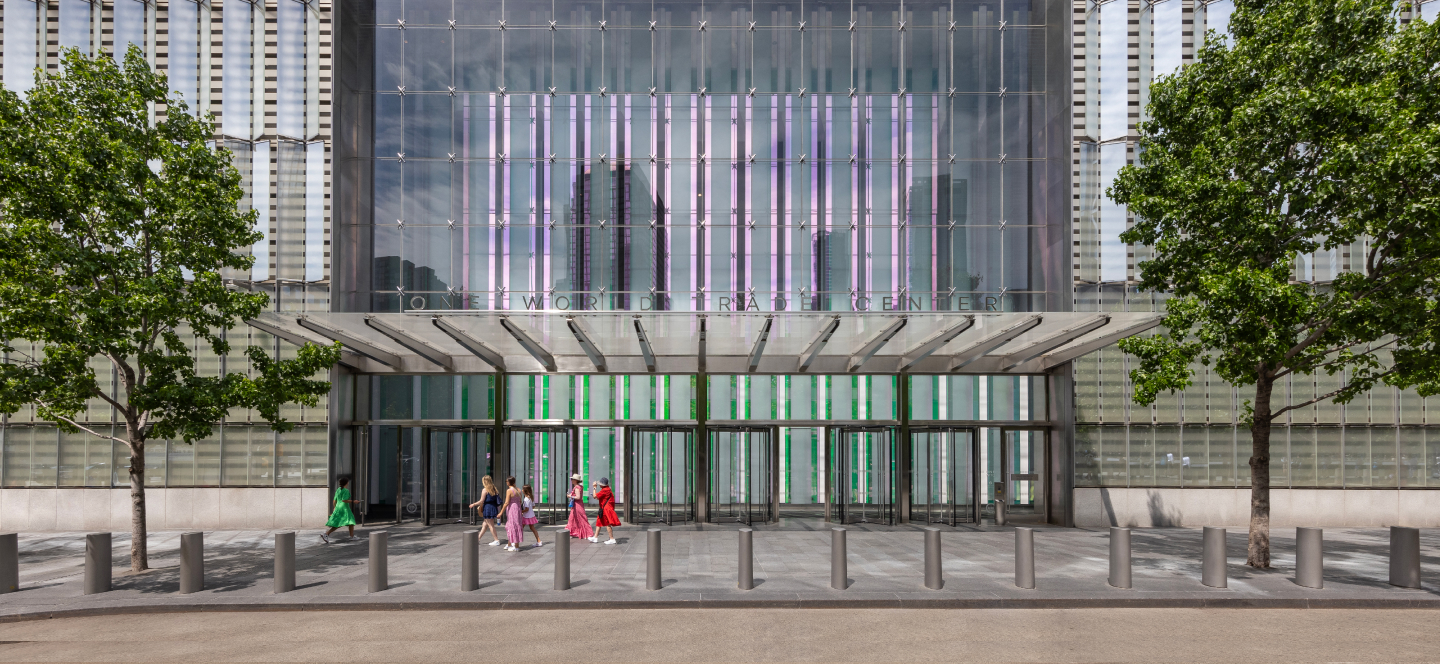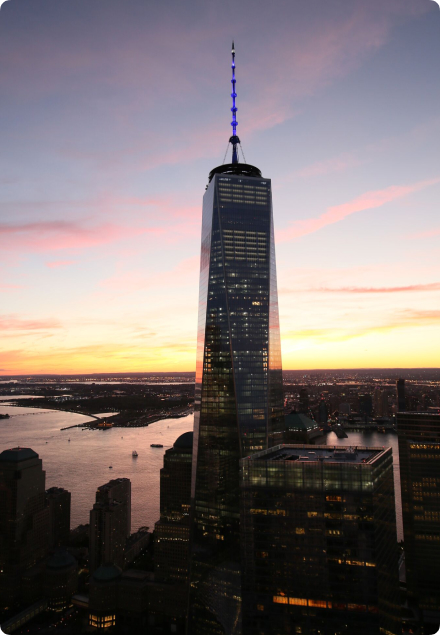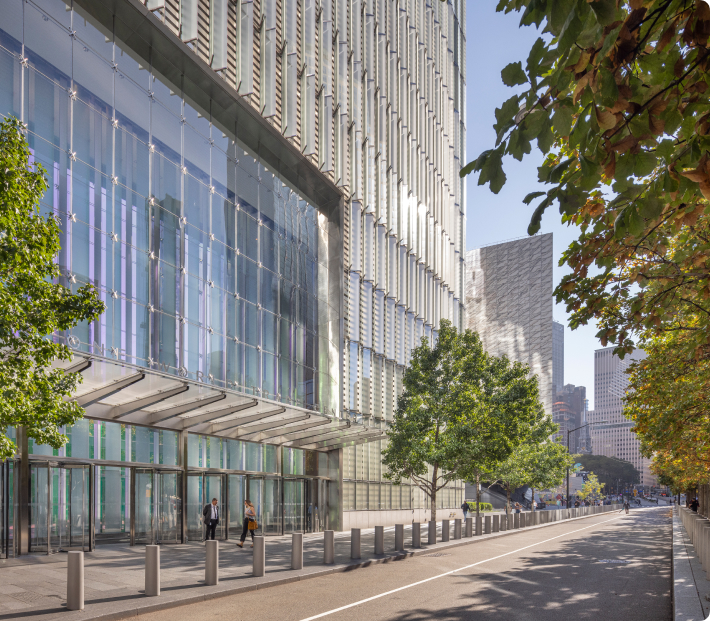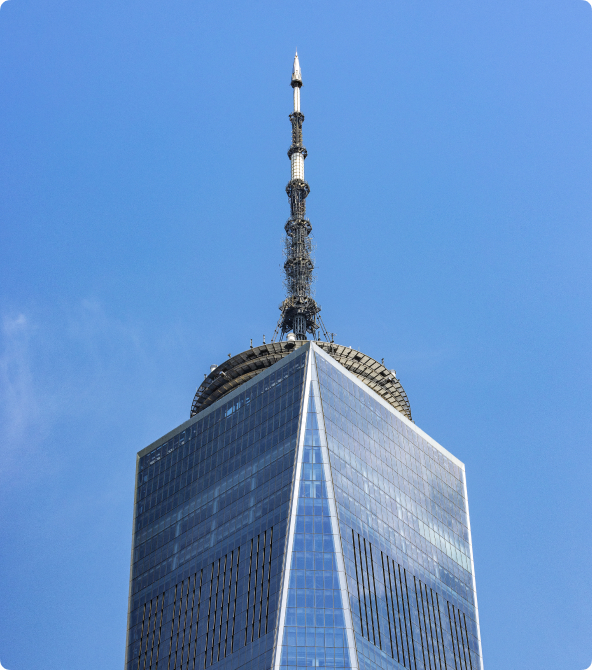More than an office

Soaring to a symbolic 1,776 feet, deliberate reference to the year of American independence—it is the tallest building in the Western Hemisphere and an iconic New York landmark. One World Trade Center was developed by The Port Authority of NY and NJ and the Durst Organization. Designed by David Childs of Skidmore, Owings & Merrill (SOM), its architecture blends modern innovation with historical significance. The glass-clad exterior reflects the skyline, creating a kaleidoscopic effect that changes with the weather, while the chamfered edges give the tower its distinctive octagonal form as it rises.
The building’s tenant roster reflects its status as a premier destination for global businesses. Condé Nast, one of its anchor tenants, relocated its headquarters to the tower in 2014, setting a precedent for the technology, media, and finance companies that have since followed.
One World Trade Center is not just a place for business, but for tourists and locals too. Located on the 100th to 102nd floors, One World Observatory offers breathtaking 360-degree views of New York and New Jersey while ONE Dine excites the palette. Visit the Things To Do page to learn more.
285 Fulton St,
New York, NY, 10007
Skidmore, Owings & Merrill (David M. Childs)
2014
104 floors / 1,776 ft
3 million sf



Full and partial floors with soaring ceilings and expanses of glass await build-outs that suit every creative whim. One World Trade Center and all other office spaces on the campus have been designed to reduce carbon emissions, conserve water and exceed the highest energy efficiency ratings of its time, thus achieving LEED Certifications from the U.S. Green Building Council. These innovations mean cost savings for business owners, a healthier, more productive workplace for employees and ultimately, a greener future planet for us all.

Nowhere is the intersection of life and work so remarkable and vibrant as it is in Lower Manhattan. The Financial District is the fastest growing neighborhood in the City for residential, retail and office, adding over two million square feet of new and repositioned retail space. New buildings are modern landmarks and epicenters for retail and commerce.